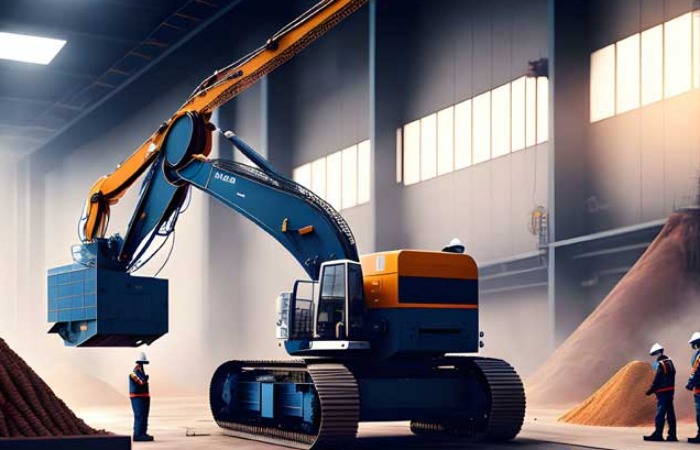
Navigating the future
The global construction and mining equipment market is projected to exhibit a compound annual growth rate (CAGR) of 3.8 per cent, surging from a value of $173.4 billion in 2023 to $225.1 billion by 2030, according to Persistence Market Research. Construction and mining equipment encompass a diverse array of specialised machinery tailored for heavy-duty tasks in construction and mining operations, such as excavators, bulldozers, loaders, crushers, and drilling equipment. These machines play a pivotal role in bolstering efficiency, productivity, and safety in demanding work environments, facilitating excavation, transportation, and material processing essential for construction projects and mining activities on a global scale.
The expansion of the construction and mining equipment market is underpinned by various factors, including robust infrastructure development, escalating demand for minerals, and advancements in technology. Infrastructure initiatives, particularly in emerging economies, are driving the demand for construction equipment, a trend anticipated to persist. Furthermore, the mining sector's pursuit of operational efficiency and automation is driving the uptake of sophisticated mining equipment. Promising avenues for growth are evident in the development of environmentally sustainable machinery and the incorporation of cutting-edge technologies such as Internet of Things (IoT) and Artificial Intelligence (AI) to augment equipment performance and safety standards. With a concerted focus on innovation and addressing sustainability imperatives, the construction and mining equipment market is poised for significant expansion and transformation in the foreseeable future.
Key market growth factors
Infrastructure development: Robust investment in infrastructure projects, particularly in emerging economies, is a primary driver of demand for construction equipment. Government initiatives aimed at improving transportation networks, building residential and commercial complexes, and enhancing public utilities spur the need for heavy-duty machinery.
Rising demand for minerals: The increasing demand for minerals, driven by industrialisation, urbanisation, and infrastructure development, fuels growth in the mining sector. This demand necessitates the adoption of advanced mining equipment to extract, process, and transport minerals efficiently.
Technological advancements: Ongoing advancements in technology, including the integration of IoT, AI, and automation, are revolutionising the construction and mining equipment market. Innovations such as telematics, predictive maintenance, and autonomous vehicles improve equipment efficiency, productivity, and safety, driving market growth.
Operational efficiency: In the mining sector, there is a growing emphasis on improving operational efficiency and reducing costs. This leads to the adoption of advanced equipment and technologies that optimize processes, enhance productivity, and minimize downtime.
Market restraints and challenges
Economic uncertainty: Fluctuations in global economic conditions, such as recessions, currency devaluations, and trade disputes, can impact investment decisions and project financing. Economic uncertainty may lead to delays or cancellations of infrastructure projects, affecting equipment demand.
Regulatory compliance: Stringent regulatory requirements related to safety, emissions, and environmental protection pose challenges for equipment manufacturers. Compliance with diverse regulations across different regions adds complexity and costs to product development and operations.
High initial investment: The capital-intensive nature of construction and mining equipment poses a barrier to entry for new market players and may deter smaller companies from investing in advanced machinery. High upfront costs for purchasing and maintaining equipment can strain budgets, particularly for small and medium-sized enterprises (SMEs).
Technological obsolescence: Rapid technological advancements and innovation cycles in equipment design and functionality can render existing machinery obsolete more quickly. Equipment manufacturers face pressure to continuously upgrade their products to remain competitive, leading to shorter product lifecycles and potential challenges in managing inventory and aftermarket support.
Skills shortage: The industry is experiencing a shortage of skilled labor, particularly operators and technicians proficient in operating and maintaining complex equipment. This shortage can impact productivity, increase training costs, and affect equipment uptime and performance.
Top trends
Digital transformation: The industry is undergoing a digital transformation, driven by advancements in technologies such as IoT, AI, Big Data analytics, and automation. Equipment manufacturers are integrating digital solutions into their products to improve efficiency, productivity, and safety. Telematics and remote monitoring enable real-time equipment tracking, predictive maintenance, and performance optimisation.
Sustainability initiatives: There is a growing focus on sustainability and environmental stewardship within the construction and mining sectors. Equipment manufacturers are developing eco-friendly solutions with reduced emissions, improved fuel efficiency, and recyclable materials. Sustainable practices, such as energy-efficient equipment design and waste reduction, are gaining traction to minimize the industrys environmental footprint.
Electrification and alternative fuels: Electrification is emerging as a key trend in construction and mining equipment, driven by the need to reduce emissions and operating costs. Manufacturers are developing electric and hybrid vehicles for various applications, including excavators, loaders, and haul trucks. Additionally, there is a growing interest in alternative fuels such as hydrogen and biofuels to power heavy machinery.


 +91-22-24193000
+91-22-24193000 Subscriber@ASAPPinfoGlobal.com
Subscriber@ASAPPinfoGlobal.com